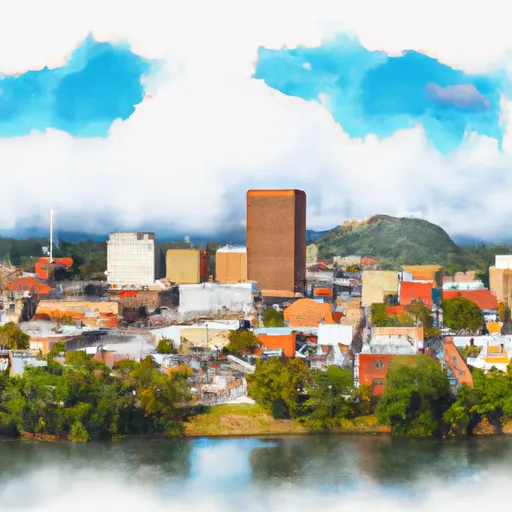-
 Snoflo Premium
Snoflo Premium
Get unlimited access to all our content
With no Ad interruptions! - Start Your Free Trial Login with existing account
Red-Bank
Eden Index
Climate
7.8
•
Recreation
5.5
•
Community
3.2
•
Safeguard
5.8/10

Red Bank, Tennessee is a charming city located in Hamilton County, just across the Tennessee River from downtown Chattanooga. Known for its scenic beauty and vibrant community, Red Bank offers a pleasant climate throughout the year. Summers are warm with average temperatures around 85°F, while winters are mild with temperatures averaging around 45°F. The city experiences moderate rainfall, making it ideal for outdoor enthusiasts.
Red Bank is surrounded by several water bodies, including the Tennessee River and Stringer's Branch, which contribute to its hydrology constituents. These water sources provide opportunities for boating, fishing, and other water-based activities. The Tennessee River, in particular, is a popular spot for water sports like kayaking and paddleboarding.
Outdoor recreation opportunities are abundant in Red Bank. The city is home to numerous parks and green spaces, such as White Oak Park and Morrison Springs Park, where visitors can enjoy hiking, picnicking, and sports activities. The nearby Stringer's Ridge Park offers miles of scenic trails for mountain biking and hiking, providing stunning views of the city and its surroundings.
In summary, Red Bank, Tennessee offers a favorable climate, beautiful water bodies, and ample outdoor recreation opportunities, making it an ideal destination for nature lovers and adventure enthusiasts.
What is the Eden Index?
The Snoflo Eden Index serves as a comprehensive rating system for regions, evaluating their desirability through a holistic assessment of climate health, outdoor recreation opportunities, and natural disaster risk, acknowledging the profound impact of these factors on livability and well-being.
Climate Health Indicator (CHI): 7.8
Red-Bank receives approximately
1349mm of rain per year,
with humidity levels near 85%
and air temperatures averaging around
16°C.
Red-Bank has a plant hardyness factor of
7, meaning
plants and agriculture in this region tend to thrive during the non-winter months.
By considering the ideal temperature range, reliable water supplies, clean air, and stable seasonal rain or snowpacks, the Climate Health Indicator (CHI) underscores the significance of a healthy climate as the foundation for quality living.
A healthy climate is paramount for ensuring a high quality of life and livability in a region, fostering both physical well-being and environmental harmony. This can be characterized by ideal temperatures, reliable access to water supplies, clean air, and consistent seasonal rain or snowpacks.
Weather Forecast
Streamflow Conditions
Middle Tennessee-Hiwassee
Area Rivers
Middle Tennessee-Hiwassee
Snowpack Depths
Middle Tennessee-Hiwassee
Reservoir Storage Capacity
Middle Tennessee-Hiwassee
Groundwater Levels
Recreational Opportunity Index (ROI): 5.5
The Recreational Opportunity Index (ROI) recognizes the value of outdoor recreational options, such as parks, hiking trails, camping sites, and fishing spots, while acknowledging that climate plays a pivotal role in ensuring the comfort and consistency of these experiences.
Access to outdoor recreational opportunities, encompassing activities such as parks, hiking, camping, and fishing, is crucial for overall well-being, and the climate plays a pivotal role in enabling and enhancing these experiences, ensuring that individuals can engage in nature-based activities comfortably and consistently.
Camping Areas
| Campground | Campsites | Reservations | Toilets | Showers | Elevation |
|---|---|---|---|---|---|
| Chewacla State Park | None | 516 ft | |||
| Brush Creek County Park | None | 693 ft | |||
| Whitetail Ridge | None | 694 ft | |||
| Pyne Road Park | 24 | 711 ft | |||
| Burnt Village | 120 | 687 ft | |||
| Amity | None | 689 ft | |||
| Blanton Creek Park | 50 | 561 ft | |||
| Spring Villa Campground | 24 | 604 ft | |||
| John Tanner State Park | None | 1,094 ft | |||
| R Shaefer Heard | None | 640 ft |
Nearby Ski Areas
Catastrophe Safeguard Index (CSI):
The Catastrophe Safeguard Index (CSI) recognizes that natural disaster risk, encompassing floods, fires, hurricanes, and tornadoes, can drastically affect safety and the overall appeal of an area.
The level of natural disaster risk in a region significantly affects safety and the overall livability, with climate change amplifying these risks by potentially increasing the frequency and intensity of events like floods, fires, hurricanes, and tornadoes, thereby posing substantial challenges to community resilience and well-being.
Community Resilience Indicator (CRI): 3.2
The Community Resilience Indicator (CRI) recognizes that education, healthcare, and socioeconomics are crucial to the well-being of a region. The CRI acknowledges the profound impact of these elements on residents' overall quality of life. By evaluating educational resources, healthcare accessibility, and economic inclusivity, the index captures the essential aspects that contribute to a thriving community, fostering resident satisfaction, equity, and social cohesion.

